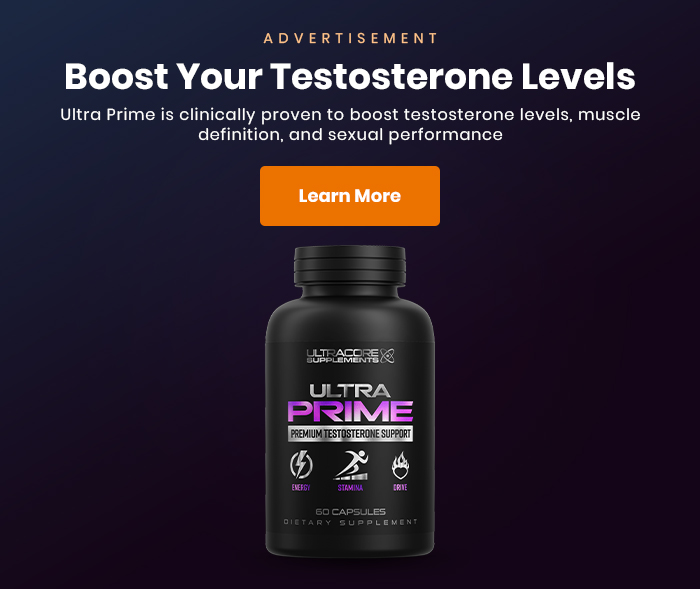But erectile dysfunction isn’t something that older men can chalk up to aging as an inescapable reality that needs to be accepted in silence. It’s not a “normal” part of aging. That’s because ED might be an indication that something bigger is happening underneath the hood.
ED is what happens if you can’t get an erection hard enough and sustain it long enough for satisfying sexual intercourse.
This means that ED can lead to the inability to enjoy firm, satisfying, and long-lasting erections or the total failure to get an erection at all. It is estimated that over 30 million Americans have experienced symptoms of erectile dysfunction at least once. Worse, ED also affects your libido.
ED happens at any age – but it gets more common in men starting age 40 onwards. According to a 2017 study, men in their 40s are 40% likely to have experienced some form of ED, and the risk increases every succeeding decade onwards. That is, men in their 50s have a 50% chance of experiencing ED, men in their 70s have a 70% chance, and so on.

Key information about erectile dysfunction
- Erectile dysfunction ranks as the most widespread sexual problem most men will experience.
- Although ED becomes more prevalent with age, it shouldn’t be considered an ordinary sign of aging.
- Age-related health conditions such as hypertension, cardiovascular disease, and diabetes are contributing factors to ED.
- If you’re noticing ED symptoms, it would be good to get a consultation with your doctor to rule out potentially dangerous underlying medical conditions.
The link between age and erectile dysfunction
There is no general age when men experience ED, but the likelihood increases from age 50 onwards. However, it is a known fact that more and more younger men are experiencing ED as early as their 20s and earlier.
Health conditions related to age may further increase your risk of erectile dysfunction, such as the following:
- Cardiovascular disease. Atherosclerosis is the most common cause of ED in men over 50. Atherosclerosis refers to the hardening of the arteries. Artery linings become harder as men age. This means that they don’t expand as flexibly to get the blood flowing to the right places – particularly, in the case of ED, to the penis (which produces an erection). Arterial plaque, which is a result of high cholesterol levels, restricts blood flow to the penis because it builds up in the arterial walls.
- Hypertension. Hypertension is more commonly known as high blood pressure. Hypertension occurs when blood pumps through the body’s vascular system harder than it should, leading to potential narrowing and damaging blood vessels’ walls. This, in turn, may lead to cardiovascular disease, stroke, or heart ailments.
- Diabetes. High blood sugar levels related to diabetes leads to inhibition of blood flow, apart from damaging the blood vessels’ walls.
- Stroke. Strokes may lead to neurological damage, which consequently might constitute a contributing factor to erectile dysfunction.
- Cancer. According to the American Cancer Society, a wide array of physiological and mental issues arising from symptoms, surgery, and treatment of cancer may contribute to erectile dysfunction.
- Depression and anxiety. Depression, anxiety, stress, and worrying about relationships and performance contribute to erectile dysfunction.
ED may also be experienced as a side effect of taking specific medications. This may include antidepressants, diuretics, and hypertensives, among others. If you’re experiencing ED symptoms, consult your doctor, and be sure to tell them about all the medications you’re currently on. This information will help them determine the right dosage and prescribe the right kind of medicine, treatment, or supplement (or a combination of any of these).
More lifestyle factors that may play a contributing role to erectile dysfunction include:
- Carrying excess weight or being obese
- The lack of exercise
- Smoking or consuming tobacco and tobacco-related products.
- Excessive consumption of alcohol (drinking excessively (having more than two alcoholic drinks a day)
- Recreational drug use
Other physical conditions that may lead to ED include nerve damage or degeneration, such as multiple sclerosis or spinal cord injuries.
Treating ED
Fortunately, there are increasingly plenty of options for treating ED.
Oral ED medications are effective in promoting improved sexual function. Common medications include sildenafil (Viagra), tadalafil (Cialis), and vardenafil (Levitra and Staxyn).
There are also some non-oral medications men can avail of, such as alprostadil, phentolamine, and papaverine, which are injectables that are applied directly into the penis to induce an erection.
Some men have also found natural remedies for erectile dysfunction to promote better erectile function, and science backs up some of those claims. Certain supplements such as ginseng, DHEA, L-Arginine, L-Carnitine, among many others, have been suggested to be useful for relieving symptoms of ED. These are ingredients that are used in some of the male enhancement supplements out in the market today.
Suppose your doctor determines that low testosterone is causing your erectile dysfunction. In that case, you may be given testosterone replacement therapy (TRT), which raises your T levels through testosterone injections, patches, or topical gels. Otherwise, you may be issued a testosterone booster supplement along with lifestyle changes that increase testosterone, such as exercise, weight training, and dietary changes.
Men with ED may find success with devices such as cock rings, penis pumps, or penis implants, which have been reported to be effective in helping restore sexual function.
In the end, your sexual function (and erections) will be at their best when you’re in the pink of health. And it can be as simple as exercising, making some better meal choices, quitting smoking, reducing alcohol consumption, and getting the right nutrients.
Regardless of your age, if you suspect ED, talk to your doctor to determine any underlying health conditions and figure out the best plan according to your needs.












